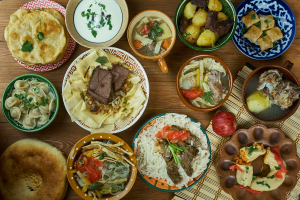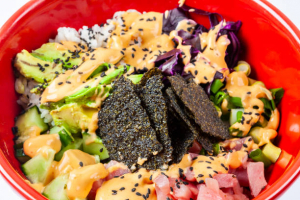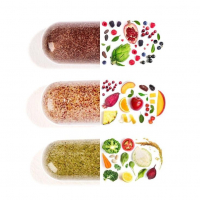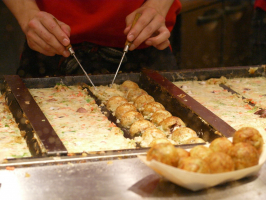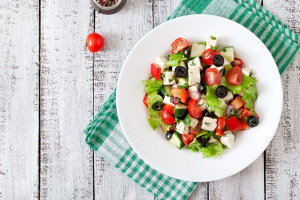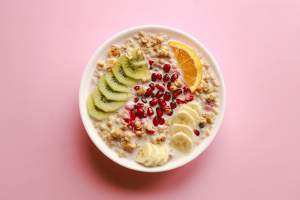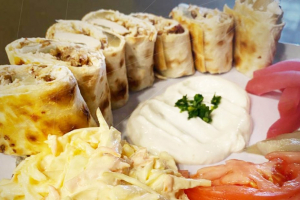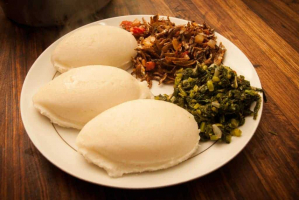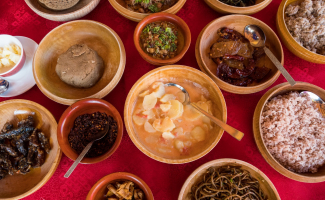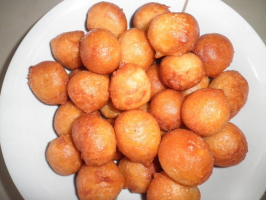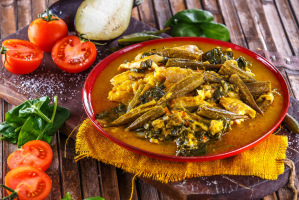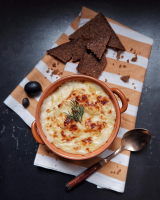Top 8 Best Bulgarian Foods
Bulgaria is a country in southeast Europe bordered by Romania to the north, Serbia and North Macedonia to the west, Greece and Turkey to the south and the ... read more...Black Sea to the east, from which it receives significant culinary influences. Bulgarian cuisine includes a variety of foods found in Middle Eastern cuisine, sharing similar staple meals with Greeks, Turks, and Serbs, but with a distinct local taste. Let's discover the most popular Bulgarian foods to prepare for your next trip to this beautiful nation!
-
Shopsla Salata, which has the same colors as the Bulgarian flag, is the queen of all Bulgarian meals and has been declared the national dish. Foreigners are familiar with the salad since it is supposed to have been devised in the 1960s by the socialist party like a tourist marketing to showcase local delicacies, with the socialist party feeling that Bulgarian veggies were among the tastiest in Europe. Another theory is that it originated with the Shopi people, who lived in the Shopluk region in the Balkans.
Shopska salad is simple to make with coarsely sliced tomatoes and cucumbers, delicious red and green peppers, green onions, red wine vinaigrette, finely shredded sirene cheese, and parsley on top. Serve as an appetizer or side dish for baked meat. Baked peppers are used instead of fresh peppers in some areas, and because olive trees are not as prevalent in Bulgaria as they are elsewhere, sunflower oil is utilized in most cooking and salad dressings. This century-old dish, which may also be found in Serbia and North Macedonia, is commonly served with a shot of rakia at the start of the meal.
Ingredients:
4 Servings- 400 g tomatoes
- 250 g cucumbers
- 1 green pepper
- 1 onion
- 100 g sirene cheese
- parsley, chopped
- vinegar
- sunflower oil
- salt
Instruction:
- Chop the tomatoes into large pieces, then peel the cucumbers and chop them into slices or half-circles.
- Next, cut the pepper into stripes or another shape of your choice, and finely chop the parsley and the onion.
- Mix all the ingredients in a large bowl then season with sunflower oil, vinegar, and salt to taste.
- Finally, grate the sirene cheese over the salad and serve.
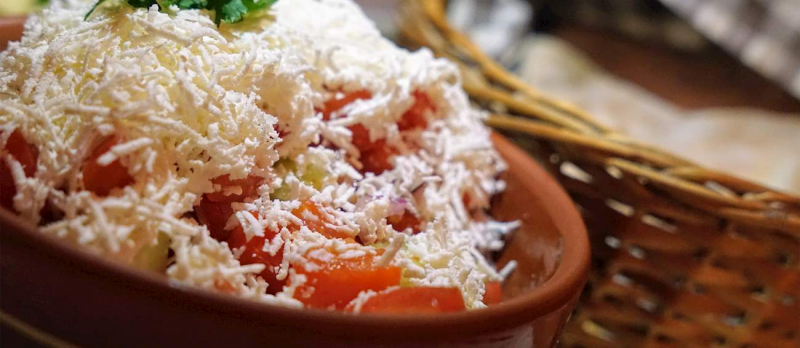
https://www.tasteatlas.com/shopska-salad 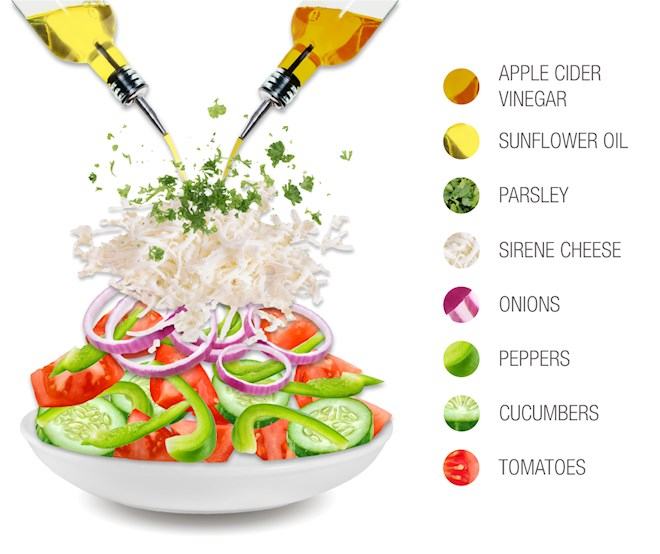
https://www.tasteatlas.com/shopska-salad -
The most common variation of Bulgarian traditional pie is Banitsa with cheese. Layers of buttered phyllo dough are layered with a mixture of eggs, yogurt, and cheeses such sirene and feta. Baking soda is an optional component in the production of banitsa. It helps the yogurt rise and makes the pie fluffier and more flavorful.
Banita with cheese was traditionally prepared and served on Christmas and New Year's Eve, but it is now available all year in grocery shops, street sellers, kiosks, and pretty much anywhere. Aside from this basic variant, there are other savory and sweet banitsa pies packed with a variety of vegetables and fruits.Ingredients:
- A pack of filo pastry (I am using Familia again and it is 500g)
- 4 eggs - 150g-200g of butter
- Approximately 200ml of vegetable oil
- 300g of feta cheese (white cheese), crumbled
- Approximately 300g of yoghurt
- 1 tablespoon of flour
- 1 teaspoon of baking soda
Instruction:
1. Making the MixtureCrack three of the eggs and beat them. Then you will only need the egg white of the 4th egg. Carefully separate it from the egg yolk as shown (in the video) and put the yolk to one side and mix it with approximately 1 tablespoon of yoghurt. After that, add the baking soda to the bowl of yoghurt and mix it together. Then transfer this to the beaten eggs and mix again until it is homogenous. Next comes the flour, you only need 1 tablespoonful in the mix. We are going to spread that on each pasty sheet later on.
2. Cut Up the Butter
It is important to say here that you can use butter or oil or a mixture of both in your Banitsa. I normally go for both and cut the hard butter into small pieces, so it is easier for me to spread it evenly across the pastry. I use normal vegetable oil on the bottom of my baking tray before I start putting the Banitsa rolls in it, that way it is nice and crispy and not stuck in the end.3. Fill the Pastry
Open the pack of filo pastry and start putting all of the ingredients on every sheet. I usually spread a bit of the egg mixture so the whole sheet is covered, then put a few butter pieces on top, to finish I top it up with a bit of crumbled feta cheese. After this is done, roll the pastry sheet with the ingredients inside and place it on the pre-oiled baking tray.
4. Prepare the Banitsa for Baking
Just before you are ready to put the Banitsa in the pre-heated to 180°c oven, put some butter pieces on top of it and make sure they are evenly distributed. This would make it look more golden-brown and delicious
5. Add Egg/yoghurt Mixture on Top
About halfway through the baking, take your Banitsa out of the oven and spread the egg yolk and yoghurt mix on top by using a brush. This improves the overall look as it gives great colour to the Banitsa and a shiny texture on top. After you do that, put the Banitsa back in the oven for another 15-20mins. The overall baking time is about 30-35mins, depending on the oven.6. Take the Banitsa Out of the Oven
This is the final step, so just carefully remove the Banitsa from the oven and sprinkle a good amount of cold water and then cover the whole tray with a clean cloth. This would allow the steam to stay under the cloth and make the Banitsa soft.
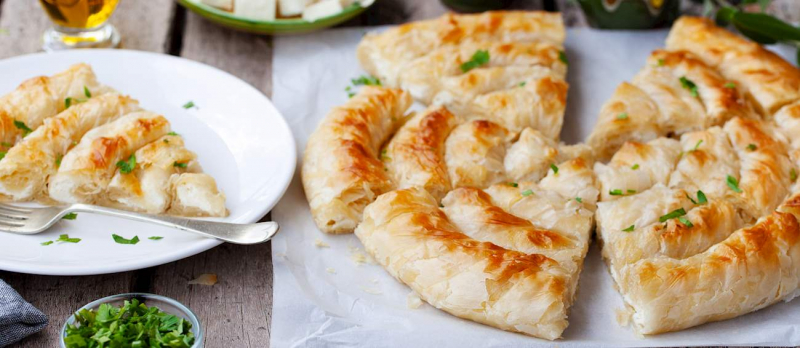
https://www.tasteatlas.com/banitsa-cheese 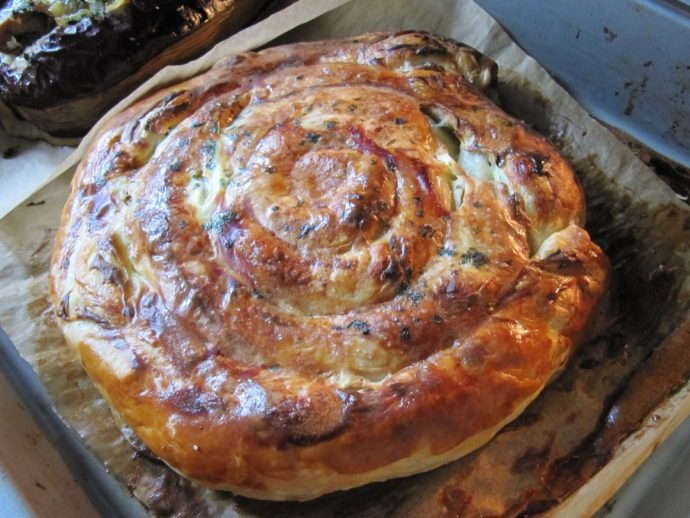
https://www.tasteatlas.com/banitsa-cheese -
Tarator is a cold Bulgarian soup made with Bulgarian yogurt, cucumbers, garlic, chopped dill, sunflower oil, walnuts, and a splash of water or ice. However, because there are different variations of this refreshing soup (particularly in North Macedonia), some ingredients may be eliminated while others may be included - for example, almonds may be replaced with bread and cucumbers may be replaced with carrots or lettuce. Instead of yogurt, a type called as plain tarator is created using vinegar and water. The soup is always served cold, and it is especially popular during the hot summer months.
Ingredients:
4 Servings- 2 cucumbers
- 400 g Bulgarian yoghurt
- finely crushed walnuts (to taste)
- 1 clove of garlic
- 1/2 l cold water
- sunflower oil
- dill, chopped
Instruction:
- Peel the cucumbers and cut them into small cubes.
- Stir yogurt while still in the pot, then add it to the cucumbers and continue stirring.
- Pour in half a liter of cold water (more or less water may be needed depending on the desired consistency).
- Crush the garlic with some salt in a mortar and pestle, then add to the soup together with ground walnuts and finely chopped dill. Season with a little sunflower oil.
- Serve cold, as an appetizer.
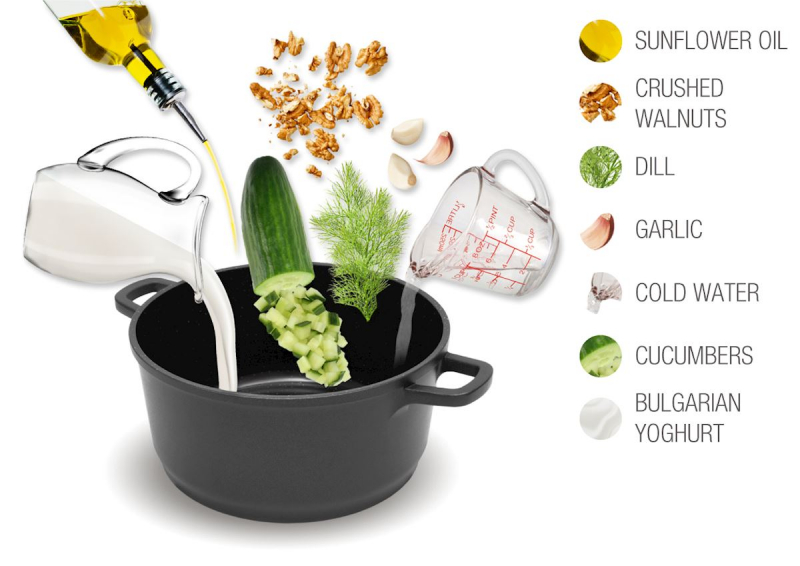
https://www.tasteatlas.com/tarator 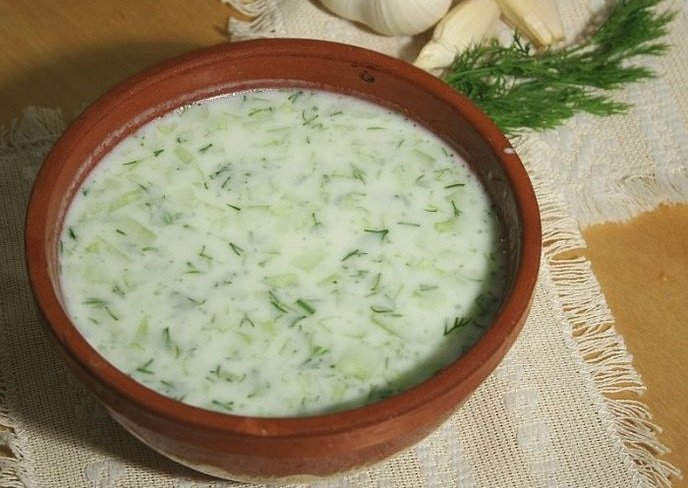
https://www.tasteatlas.com/tarator -
If you're searching for a quick snack or appetiser in Bulgaria, grab a roll or slice some Lukanka. Lukanka, a classic salami, is a Bulgarian version of the Italian soppressata. Lukanka is delicious as a snack, with vegetables, or over drinks with cheese. Salami is a mixture of beef and fat that is cured with spices and herbs before being cased and dried. Every region in Bulgaria has its own unique style of creating Lukanka, and some even patent their local Lukanka at the Bulgarian patent office!
Ingredients:
- veal - 9 lb (4 kg)
- pork - 9 lb (4 kg)
- salt - 3/4 cup
- black pepper - 1 1/3 tbsp (20 g)
- cumin - 1 tsp (6 g)
- carbonated water - 2 cups (500 ml) (2 bottles of 1 cup (250 ml) each)
- intestines - beef, dried
Instruction:
- Clean the meat off bones, wash, dry it, cut it into pieces, then grind twice through a meat grinder.
- Mix well with the spices, while gradually adding 1 bottle of carbonated water. Leave the mixture in the fridge for 24 hours.
- Knead it again, pour in the 2nd bottle of carbonated water as well. Leave in the fridge for 24 hours again.
- On the 3rd day, after kneading everything again, fill the intestines with the mixture, while poking holes carefully every now and then to get the air out.
- Keep the lukanka in a cool area for 3 days, then roll it out with a rolling pin every day for 5 days. Leave it for 15 days with a weight pressed on top, then hang it up to dry for 30 days in a ventilated area.
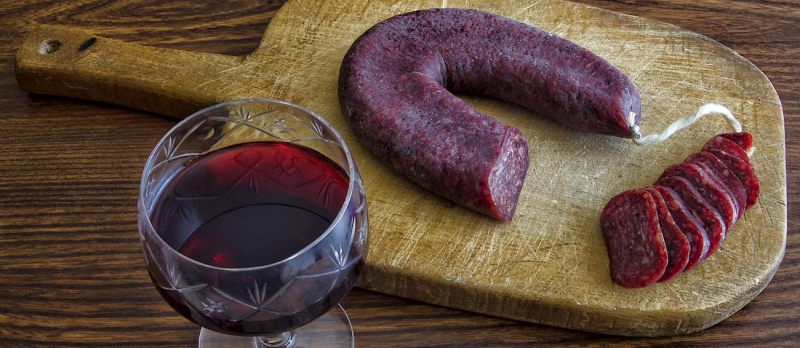
https://www.tasteatlas.com/lukanka 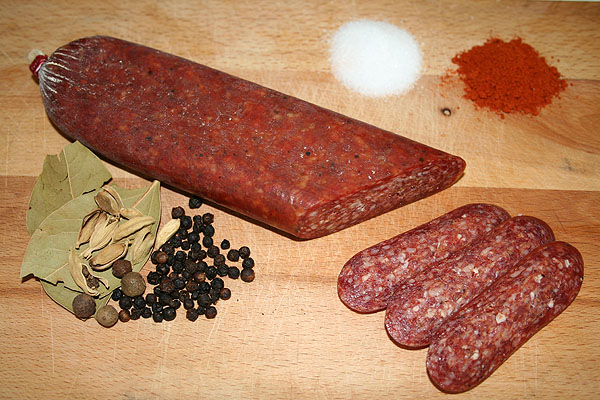
https://www.thebrokebackpacker.com/ -
Kebapche is a Bulgarian delicacy made of spiced minced meat (beef, pork, or a combination of the two) formed into little sausages. The meat must be grilled rather than fried, and it is a mainstay of many Bulgarian feasts and celebrations, combining exceptionally well with a glass of cool beer.
The dish's name is taken from the term kebab, which is a popular grilled meat dish, hence kebapche translates as "small kebab." The dish is supposed to have arrived in Bulgaria with the Ottomans in the 14th or 15th century, and by the beginning of the 20th century, it was so popular that one couldn't pass a street corner in Sofia without seeing one of the countless kebapche kiosks, nearly invariably affiliated with a brewery.
Ingredients:
5 Servings- 500 g beef and pork mince
- 1 tsp cumin
- salt and pepper, to taste
- sunflower oil
Instruction:
- Mix the minced meat with a teaspoon of cumin and salt and pepper to taste until incorporated.
- Form the meat into oblongs about 15 cm long.
- Grill them on a barbecue, turning them often, so they bake evenly.
- Serve while still warm.

https://www.tasteatlas.com/kebapche 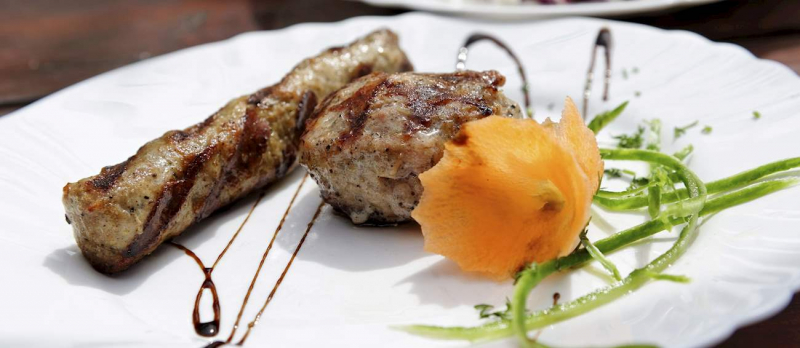
https://www.tasteatlas.com/kebapche -
The Bulgarian Gyuvech is a wonderful testament to slow-food culture around the world. The dish is named after the traditional Bulgarian earthenware pot. The name of a Bulgarian dish as well as the ceramic saucepan in which it is customarily served. The casserole is shallow to assist liquid evaporation. Some types have lids, while the majority have short flat or loop handles. Some of the pots are unglazed on the outside and were designed to be used over burning embers. Other variants of the pots are glazed both inside and out and are intended for use in the oven.
Ingredients:
- 1/3 cup vegetable oil
- 4 cups chopped onions
- 10 garlic cloves, minced
- 8 bay leaves
- 3 1/2 pounds boneless beef chuck, cut into 1 1/2-inch cube
- 3 tablespoons sweet Hungarian paprika
- 1 tablespoon grated lemon peel
- 1 teaspoon dried summer savoury
- 1/2 teaspoon cayenne pepper
- 3 cups beef stock or canned broth
- 1/3 cup dry red wine
- 1 tablespoon butter, room temperature
- 1 tablespoon all-purpose flour
- 12 ounces egg noodles
Instruction:
- Heat oil in a heavy large pot over medium heat. Add onions, garlic and bay leave. Sauté until onions are golden, about 15 minutes. Sprinkle meat with salt and pepper. Add to pot. Add paprika, lemon peel, savory and cayenne pepper; stir until meat is coated. Add stock and wine. Bring to boil. Reduce heat, cover and simmer until meat is very tender, stirring occasionally about 1 hour 30 minutes.
- Using a slotted spoon, transfer meat to a bowl. Mix butter and flour in a small bowl until smooth paste forms. Add to cooking liquid in the pot, whisking constantly. Simmer until cooking liquid thickens to sauce consistency, stirring frequently, about 8 minutes. Season sauce with salt and pepper.
- Return meat to the sauce. (Can be made 1 day ahead. Cover; chill.)
- Cook noodles in a large pot of boiling salted water until tender but still firm to bite. Drain and transfer to a large bowl.
- Bring stew to simmer. Spoon over noodles. Sprinkle with parsley and serve.
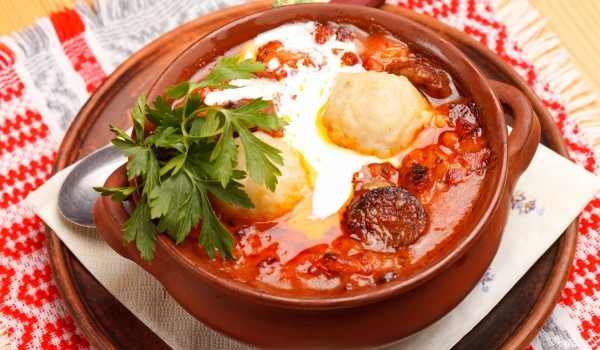
https://tastycraze.com/recipes/ 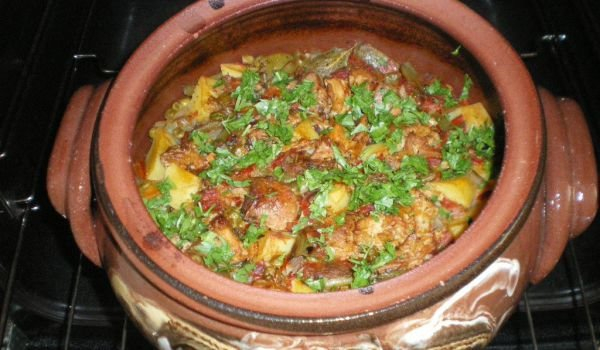
https://www.thebrokebackpacker.com/ -
Yogurt Kiselo Mlyako is commonly served with traditional Bulgarian cuisine. It has a thick, sour flavor and is said to be a fantastic method to keep your gut bacteria healthy. According to legend, Ilya Ilyich Mechnikov, a Nobel Prize-winning zoologist and immunologist, examined Bulgarian peasants and the Bulgarian cuisine they eat. He then ascribed their longevity to how much yoghurt they take!
Ingredients:
- 1 gallon of milk (1%, 2% or whole milk)
- 1 lb plain yogurt (make sure that the label says "with active bacteria")
Instruction:
- Put milk in a large saucepan and heat it over medium heat till boiling. Put the milk aside and let cool for about 35-45 min. You can check the milk with a small finger -- it (the milk) should be warm, but not very hot (If you wish you can use a thermometer: 43-45 C).
- Beat yogurt with a fork or steel whisk in a bowl. Add 1 cup warm milk, mix well. Little by little add yogurt-milk mixture to the rest of the milk. Mix again. Pour milk into glass jars or ceramic bowls with lids. Put jars on a flat surface. Cover with something that will keep it warm, such as a folded blanket or a sleeping bag (I am using a sleeping bag). Let it stay for 2 hours and 30 min. Check "kiselo mlyako" - it should be thick. Let stay uncovered at room temperature for 30 min. Put in the refrigerator for 3-4 hours.
- Enjoy the results.
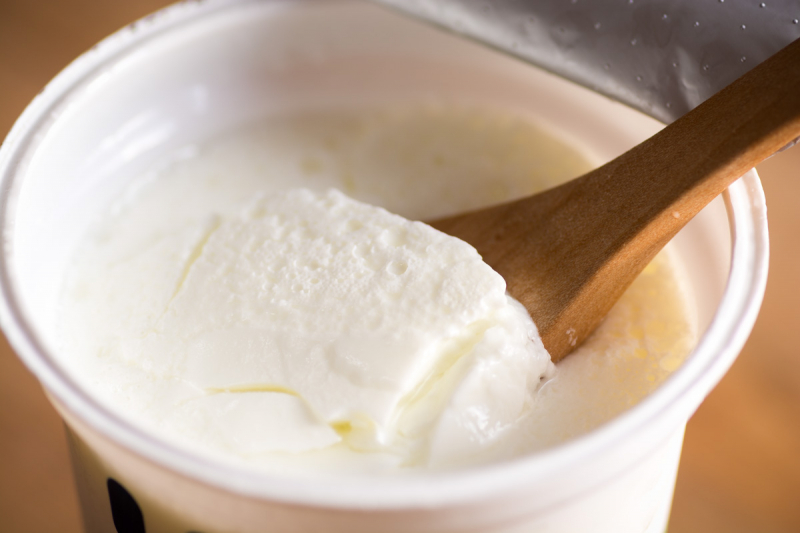
https://www.gourmetsleuth.com/recipes/detail/bulgarian-yoghurt-kiselo-mljako 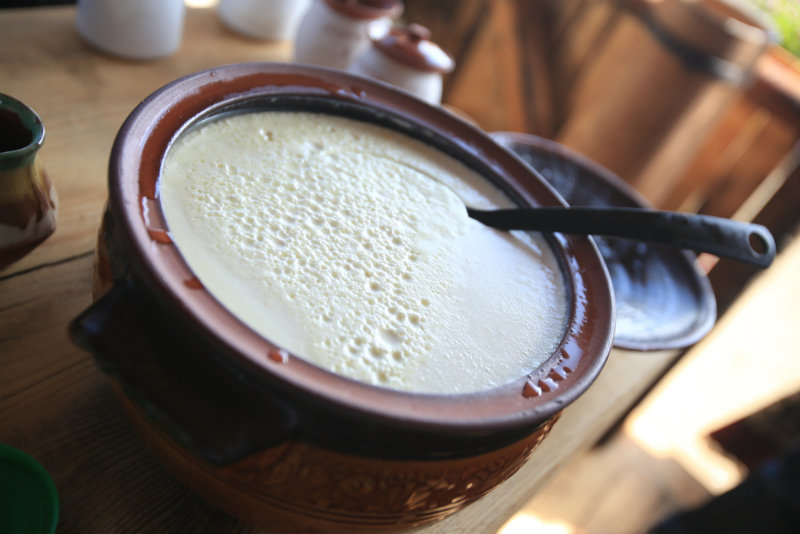
https://www.gourmetsleuth.com/recipes/detail/bulgarian-yoghurt-kiselo-mljako -
Kurabiiki is a Bulgarian version of the popular Middle Eastern biscuit qurabiya. During the festive holiday season, these sweet cookies made with butter, honey, egg yolks, sugar, and flour are extremely popular in Bulgaria. Before baking, the cookies are typically formed into balls and dipped in coarse sugar. Kurabiiki can be eaten right afterwards or stored in tightly screwed jars and tins for later use, ensuring they stay crisp and fresh for as long as possible.
Ingredients:
- 3 cup all-purpose flour
- 1 cup powdered sugar
- 1 egg yolk
- 1 cup butter
- 1/4 cup milk or yogurt
- 1 tsp baking powder
- 1 tsp vanilla extract
Instruction:
- Mix together in a large bowl powdered sugar with butter.
- Use a separated bowl to beat the egg yolk and vanilla with the baking powder, then whisk them together with the powdered sugar.
- Then add the all-purpose flour to the mixture with milk and mix it all together.
- Leave the dough in the bowl for 15 minutes, then form the balls from the dough.
- Preheat the oven to 350F/ 180C.
- Bake until golden brown.
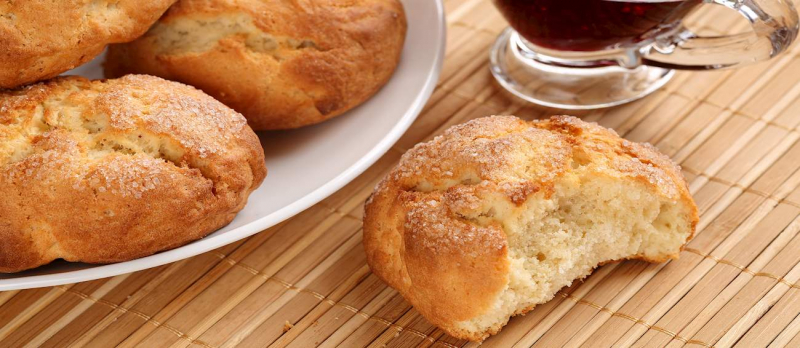
https://www.tasteatlas.com/kurabiiki




